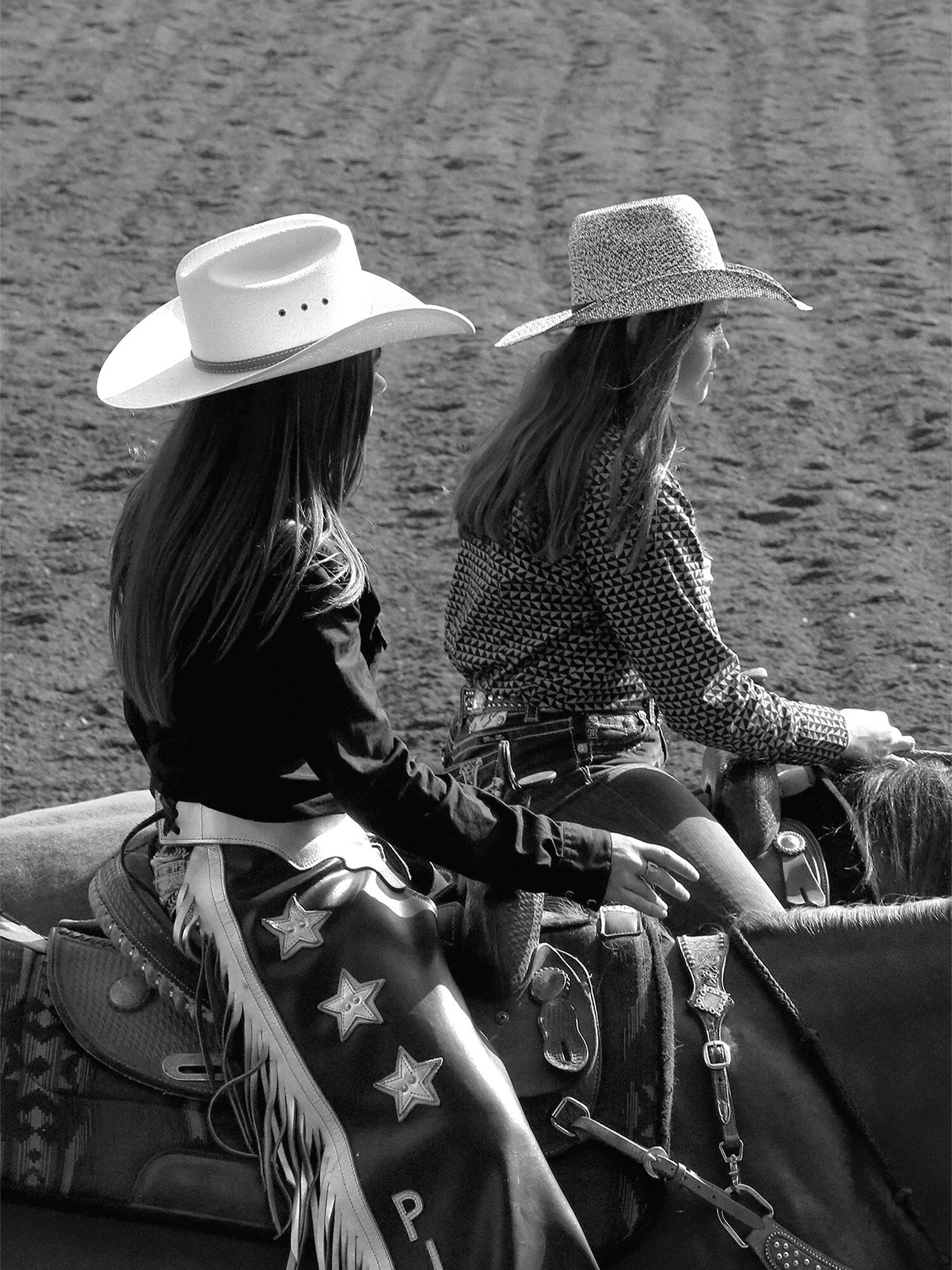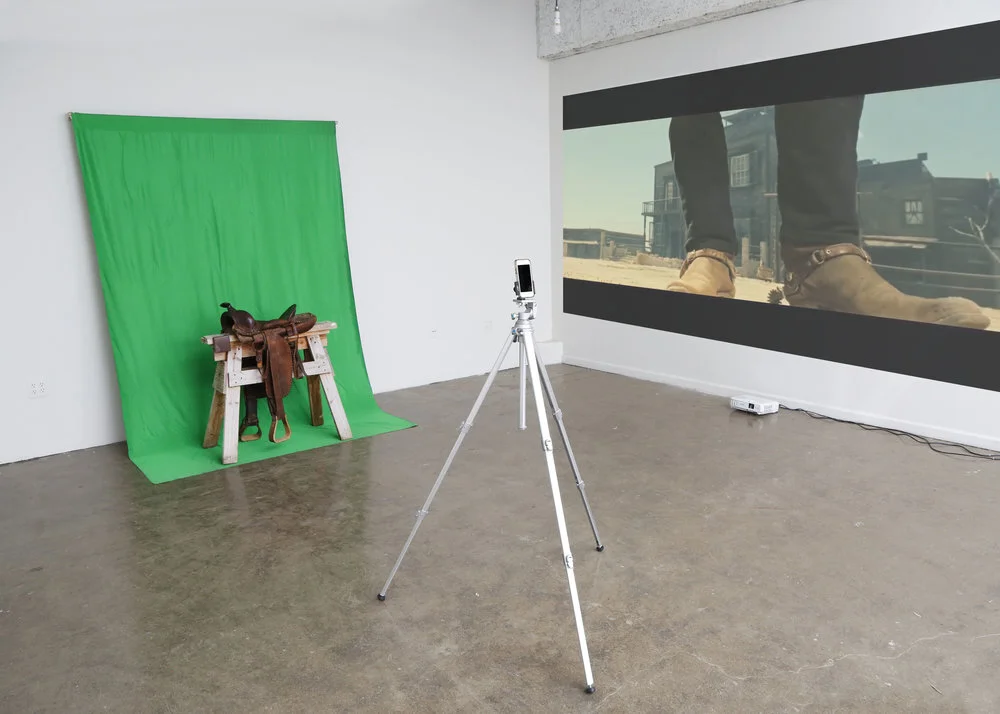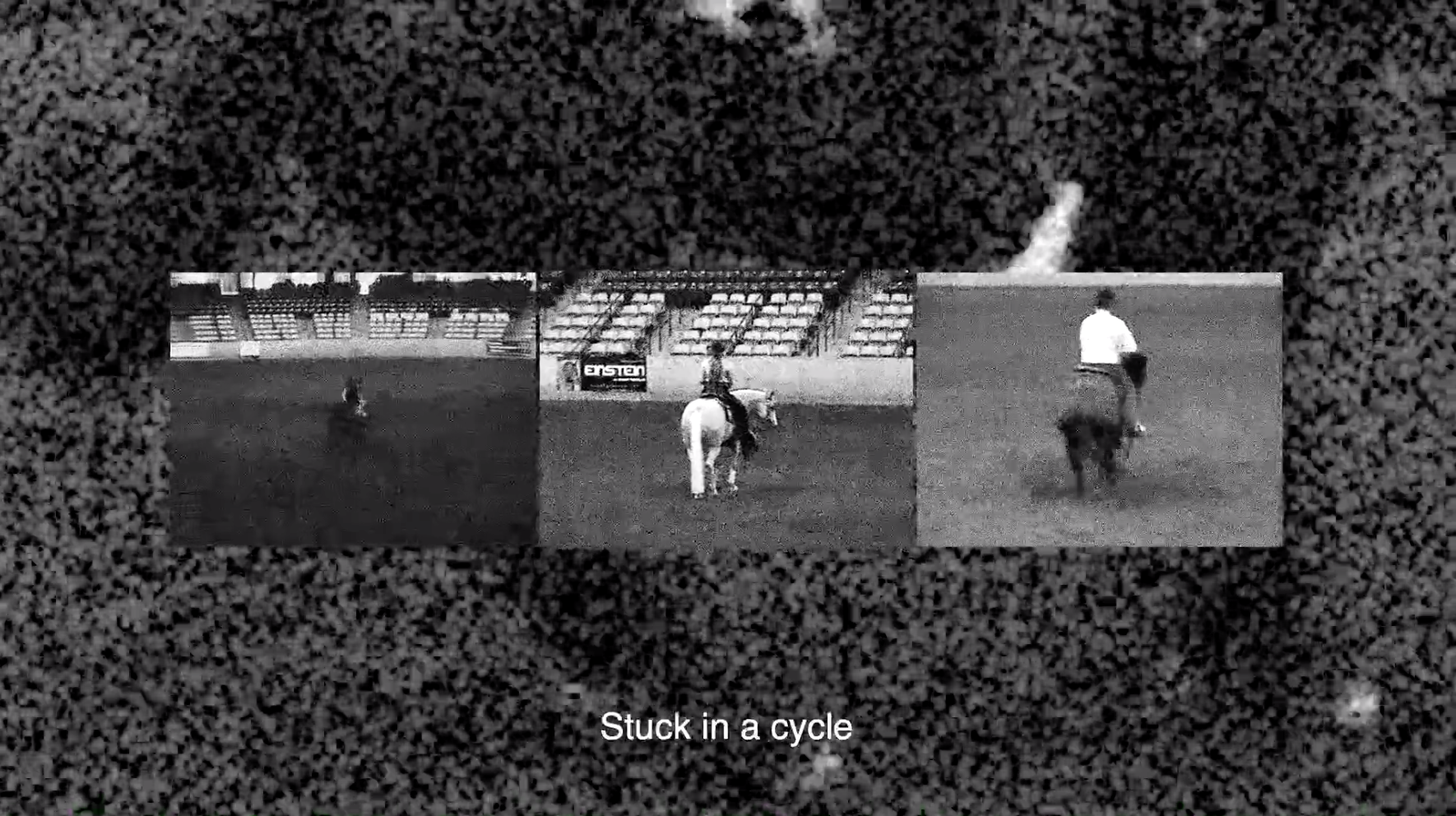Conversation 03: Antonia Stoyanovich
Almost a year ago when Antonia asked me if I had any book recommendations that had to do with the American West as mythic, I was caught up in the concept for a while. I didn’t have a book. The American West mythos? Like Western films? Or tales of the land before it was colonized? These were my questions, but I kept them in my head. It was the first time that I had come to recognize the fact that I fall into the category of people who have constructed a fantasized image of the West. I know nothing about it. I’ve never been. But throughout this past year (and longer), Antonia investigated the mythos of the American West, the very one that formalizes within the various dynamics people have between themselves and the “West.” Witnessing the growth of her investigation was gratifying. Gratifying because in general, it’s great to see artwork come into being and settle as a finished piece, but also because I actually learned a lot from it. I got the chance to sit with Antonia for a 15-minute conversation on her youth, her art practice, the American West, rodeos, and her recent projects, Myths and Figments and Pen With No Exit. Once again, I’d like to thank Antonia for being willing to dive so deep into this topic with me in under 20-minutes! That’s the challenge after all…
–Danielle Francisca
Conversation with Antonia Stoyanovich (Transcript)
Danielle: I’m here with Antonia Stoyanovich, talking about the American West, which is actually super interesting to me. I think the reason why is because you (Antonia) focus a lot on the mysticism of the American West. And I feel like nothing can more perfectly capture what I think of the American West because I don’t really know it at all, as someone who grew up in mostly the Midwest, in especially urban communities. I don’t really even have much exposure to the rural areas of Michigan. Or of the Midwest at all.
So I think it’s really cool, this idea, and it’s definitely super fascinating to me. And I just want to mention, too, that we’re at a point in time where I think almost a year ago, last August, you asked me if I happen to know of a book having to do with American Mysticism in the West United States—Do you remember asking me that at all?
Antonia Stoyanovich: I think, I do, yeah, because it was right when nox library was starting.
D: By the way, congrats on receiving your MFA!!
AS: Thank you, thank you!
D: So, (in your second year at Cranbrook) you produced this beautiful body of work which is such a cohesive mix of sculpture, photography, and video work, and it was after I witnessed that—and, you know, it was sad you couldn’t have open studios this year—but after I witnessed at least online, on your instagram page, that project coming into being, I really began to understand what you were seeking.
But before we move on to the work itself, I kinda want to know more about you and where you’re from, and why you focus on the American West as a subject, and also if you could cover here for me, again, what a rodeo is???
AS: Yes!! Yes, of course. So I grew up along the West coast, between the state of California and Washington state. This kind of shift between two places, it was a really intense thing for me, and I think even as a child moving between places it kind of made me really aware of place, and of missing things very early on as a child. I remember being in Washington state and sort of romanticizing California because of that. That’s something that was really important when later on in my life I ended up going to school in New York and was separated from the West as a whole, and just kind of mulling over the space and the subtleties of it that you see pop up in other parts of the country that become this larger mythical—why I call it “mythos”—a kind of creation of the idea of the West, when in all actuality it’s not exactly that.
I grew up between these two places, and my mother is an orchestral conductor and she, of course, is always working multiple jobs and one of them was in Montana, so for about 4 1/2 - 5 years we would spend summers going out to visit her—she ran orchestral cycles in Montana. It’s Butte, Montana, which is a very small town, has a very cowboy culture, maybe an hour away from Azula, Montana. So that also was a big part of having this kind of fantasy summer, idealized rodeo experience…
D: You talk about it and I’m like wow, I kinda want that.
AS: Yeah! You know, it’s really fun as a kid. It’s like “oh yeah! Come learn how to ride bareback.” You know, “let’s go fishing”—all these things that were sort of out of the norm of the pacific northwest. There was a lot of outdoor culture.
D: Montana is where you were exposed to rodeos?
AS: Yeah! So, the rodeo is a fascinating event. At its core it’s culture, it’s athletics, it’s a sporting event, it’s community…
The first rodeo I actually went to was in Washington state, but I went to more and more rodeos in Montana when I was a kid. But basically, the rodeos themselves are part of these events that are split up into something that is called a rough-stock event or timed event.
D: What does that mean: roughstock?
AS: Roughstock would be an event where you have a bucking horse. A bucking horse is a horse that is specifically bred to be wild. Cowboys then would jump on these animals and try to perform different maneuvers.
D: That sounds so... violating [nervously laughing]…
AS: Yeah, so it’s a very intense experience. Timed events are also any event that is based on doing something as quick as possible. For example, a tie down.
D: Okay, okay, I see
AS: Again, you can kind of see how these different events overlap. Some rodeos really become hybrids of different events, depending on the audience, whereas others will stick to the classics, like a tie-down is a very classic one and pretty much all rodeos will have something like that.
D: So they’re like fairs. Are they multi-day events?
AS: So depending on the context—I think how most people are exposed to them are at state fairs or county fairs will have a rodeo as a portion of that event. And then there are also rodeos that are just rodeos for themselves. There’s a circuit, so people will travel to these different rodeos around the state and gain rankings, and then compete at regional and even state and national levels.
So it’s a very organized sport, and there’s a huge amount of money and dedication that goes into these people that take it very commercially.
But at the same time, this is something that can be done at a very local level. For example, I was in west Texas over the summer and we went to one, Ranch Hand’s Rodeo. It was only people competing from ranches in the area that are actually working cowboys. So that was really cool because this was of people who actually work with animals in the ranches and the fields, and then were competing with these techniques rather than just people who were utilizing (the event) as a sporting event.
D: You kind of touched on this, on why it has this kind of mythos around it and why the American West is viewed as mythic, not only to you but I think to a lot of people—and I don’t mean to speak for everyone who is in the urban midwest, but I think it’s super mythic to them too. When I think about the mysticism of the American West I first think about entertainment, especially old westerns, old novels, and, as you mentioned before, Italian westerns. Those all reinforce this romanticized, mythic feeling of the west.
I kind of want to know about the audience. When you’re showcasing this work in West Bloomfield—or Bloomfield Hills? Okay yeah so Bloomfield Hills...I’m sure many of the people, students and other audience members there, feel kind of detached from that (American western) culture that reinforces that same kind of “romanticized” west dynamic between the audience and the subject. Is that something you were thinking about before you implemented your most recent project, Myths and Figments?
AS: I think it’s something that as an artist you’re always considering. You generate this work and then you put it out into the world, so then it’s like “okay who is it coming into contact with; who is it for?” or “how does it relate to myself?” I think definitely being in Bloomfield Hills in the Midwest, the rodeo, the cowboy, the horse—just the American West as a geographical space— is removed from anything anyone’s gonna see in Bloomfield Hills. I think it’s a very valid reaction to find romanticization to my work and to be attracted to that. A sort of exoticism of these concepts—I do think that is very valid in some ways, because it is a now consistent relationship that a lot of Americans have had with that part of the country, whether or not they’re from there. Even kids grow up with this sort of cowboy character, playing games and what not. So it’s like, why are we attracted to this image? This idea of masculinity and individualism?
I hope on a basic level that people sort of see that regardless of where they are and connect with that.
D: What your work does is confront the fact that we do tend to make this fantasy of the West, and in reaction, your art makes it more real for its audience that doesn’t know the West so well. It solidifies certain things, especially when you touch on the more political parts of the rodeo, and on the subjects, the West, and especially the Southwest. It feels very real. There are certain bodies of work that I mentioned before—Pen with No Exit, for example. All of a sudden there’s this solid manifestation of the West. I think your use of sculpture really reinforced that as well, with actual pens there and video works there as well.
This work feeds off a sort of anti-structure doctrine. One of the videos (in Pen with No Exit) asserts ‘structures are systems of control and systems of fear.’ I think of the horse when I read those words and watch that video, especially when looking at the pens. But I also think it’s really political in regards to human society. And so my question is: do you see the rodeo as political?
AS: I do. I think the rodeo itself has a lot of politics behind it, especially if you just consider the use of the animals and the animals’ bodies. My own personal experience being in these spaces and, when people are unfamiliar with you in these sometimes close communities, it’s like ‘well are you from Peeta?’ you know, it’s like they’re trying to figure it out: you’ve got a camera, got a lens, what are you doing out here?
The rodeo is political in that way. But for me, I think the rodeo and the parallel of this pen that controls the body, whether it’s an animal’s body or a person’s body, is inherently extremely political. For me, that sort of motif of control has been growing in my work the more and more I consider the west and this sort of mythos. I think that has to do with some of this physical control of land in the west, a physical control of bodies, such as the horse and people. But it also has to do with the control of the idea. I mean, a huge part of our ideas of the “Western” comes from Hollywood, and that’s the ultimate control machine. You’re creating the narrative, you’re directing every person, every stick, stone, river in the shot.
When working with video and the camera itself, all these sorts of parallels—these sorts of aspects of control—really begin coming to my mind, just considering how the image is another method of control. So for me, it was a really natural connection to pair video with this giant, structural fence, and then bring the rodeo into it. Especially when I was in West Texas experiencing a lot of these sort of systems up close and personal...
D: So we’re down to a minute or two…
AS: Oh no!
D: It’s funny, because it’s called “pressed coffee” and I just think about how we’re also so pressed for time. The challenge, too, is figuring out how much we can get out there in such limited time. So I would love to do a part two eventually.
One last thing: in some of your video works, like the ones I mentioned earlier, the imagery is grainy and shot in black and white, and I noticed a lot of the photography in your series (Myths and Figments) are also black and white, and that brings up a really nostalgic kind of understanding of the west, especially of photographic documentation of the west within history. What made you choose black and white?
AS: For me, photography—black and white photography, in particular—has always been like a close love of mine. I started off as a kid trying to do dark room photography, primarily with the intent to just prove that experiences and relationships happen. It was really a method of documenting that I was with my friends and that we did this thing or that I went to this place. As I delved more into the medium, I really fell in love with the history and the other things you could do with it. I was always so very aware that the photographs could be like this artifact, so for me, thinking about now and mythology, these sort of memories, and the American west mythos, black and white photography really became this perfect way to examine what our relationship with truth is and what is believable. Somehow, black and white image, I think, still has that sort of power over us.
And this translates over to video as well. The way a grainy television is trying to communicate an image so desperately, it must have some sort of truth to it. Also, in just relating to surveillance footage, as well, this sort of “fact finding” or “truth finding” recorder, I think is really important to those videos where I use it. Whereas in contrast, using b-roll footage, footage from American Westerns, I do use a lot of found footage in that way, and it’s usually in color.
D: Where do you find that footage? To be able to edit it?
AS: Oh, all over. [laughing]
D: You just download it from somewhere?
AS: I’m one of those people that watches so many movies. I love research that’s just like me watching movies all the time. That is a part of it, and also just long internet searches where I look for long details to cut up and put back together. It’s kind of like a fun archive that I create that is very different from a photographic archive.
D: I really appreciate you talking to me, Antonia. The time limit just doesn’t do your body of work justice! I’m still tweaking this format. It’s easy to go on and on, I mean, we were talking about our cats for like, 20 minutes before this. So again, thank you!
End.
Antonia Stoyanovich is a visual artist currently based in Detroit. Using image-based media, her practice expands the mythology of the American West into contemporary and physical content. Utilizing the image through research, photography, video, sculpture and installation she creates relationships between fact and fiction to respond to current values of Americana and individualism. Stoyanovich is a graduate of the Masters of Fine Arts Photography program at Cranbrook Academy of Art (May 2020) and an alumna of The Cooper Union, School of Art where she received her Bachelor of Fine Arts (2016). Stoyanovich is also a recent recipient of the 20/20 Emerging Artist Fellowship with Playground Detroit and looks forward to exhibiting a solo exhibition with Playground Detroit this Fall 2020. You can discover more of her work at AntoniaStoyanovich.com.
This conversation is a feature of Pressed Coffee 07. If you would like to make an anonymous comment or correction, please fill out this Google form. Note that these comments and corrections may be shared with the readership.
Comments, corrections, and inquiries may also be directed to noxlibrary@gmail.com





